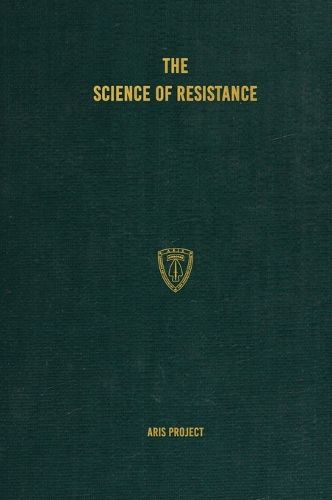Readings Newsletter
Become a Readings Member to make your shopping experience even easier.
Sign in or sign up for free!
You’re not far away from qualifying for FREE standard shipping within Australia
You’ve qualified for FREE standard shipping within Australia
The cart is loading…






This title is printed to order. This book may have been self-published. If so, we cannot guarantee the quality of the content. In the main most books will have gone through the editing process however some may not. We therefore suggest that you be aware of this before ordering this book. If in doubt check either the author or publisher’s details as we are unable to accept any returns unless they are faulty. Please contact us if you have any questions.
The modern use of the word resistance was first based on the domestic insurgent movements of Europe against Axis occupying powers in World War Two, especially the French Resistance. The conception of resistance as a domestic effort against an encroaching foreign force had a lasting impact on definitions of the term throughout the US military as communist regimes were understood as politically executed occupations.
In the original 1963 publication of the seminal Undergrounds in Insurgent, Revolutionary, and Resistance Warfare (also republished in its entirety by Conflict Research Group in 2024), the Special Operations Research Office (SORO) cited a 1949 text, defining resistance as distinct from revolutions and insurgencies: "operations directed against an enemy, behind his lines, by discontented elements among the enemy or enemy occupied population." This conception of resistance as inherently insurgent in nature remains influential. The 2012 Guide to the Analysis of Insurgency (also republished by Conflict Research Group in 2024) defines resistance as a type of insurgency (distinct from revolutionary, separatist, and other variants) that "seek[s] to compel an occupying power to withdraw from a given territory." The definitions rely on describing resistance as corollary of interstate war and as a product resulting from armed violence.
Alternatively, there has also been a broadening strain of thought on the nature of resistance in two regards: first, that resistance does not need to be against a foreign occupier, and second, that it does not need to be carried out through the predominant use of violent tactics.
Resistance is a science and The Science of Resistance demystifies that science.
$9.00 standard shipping within Australia
FREE standard shipping within Australia for orders over $100.00
Express & International shipping calculated at checkout
This title is printed to order. This book may have been self-published. If so, we cannot guarantee the quality of the content. In the main most books will have gone through the editing process however some may not. We therefore suggest that you be aware of this before ordering this book. If in doubt check either the author or publisher’s details as we are unable to accept any returns unless they are faulty. Please contact us if you have any questions.
The modern use of the word resistance was first based on the domestic insurgent movements of Europe against Axis occupying powers in World War Two, especially the French Resistance. The conception of resistance as a domestic effort against an encroaching foreign force had a lasting impact on definitions of the term throughout the US military as communist regimes were understood as politically executed occupations.
In the original 1963 publication of the seminal Undergrounds in Insurgent, Revolutionary, and Resistance Warfare (also republished in its entirety by Conflict Research Group in 2024), the Special Operations Research Office (SORO) cited a 1949 text, defining resistance as distinct from revolutions and insurgencies: "operations directed against an enemy, behind his lines, by discontented elements among the enemy or enemy occupied population." This conception of resistance as inherently insurgent in nature remains influential. The 2012 Guide to the Analysis of Insurgency (also republished by Conflict Research Group in 2024) defines resistance as a type of insurgency (distinct from revolutionary, separatist, and other variants) that "seek[s] to compel an occupying power to withdraw from a given territory." The definitions rely on describing resistance as corollary of interstate war and as a product resulting from armed violence.
Alternatively, there has also been a broadening strain of thought on the nature of resistance in two regards: first, that resistance does not need to be against a foreign occupier, and second, that it does not need to be carried out through the predominant use of violent tactics.
Resistance is a science and The Science of Resistance demystifies that science.